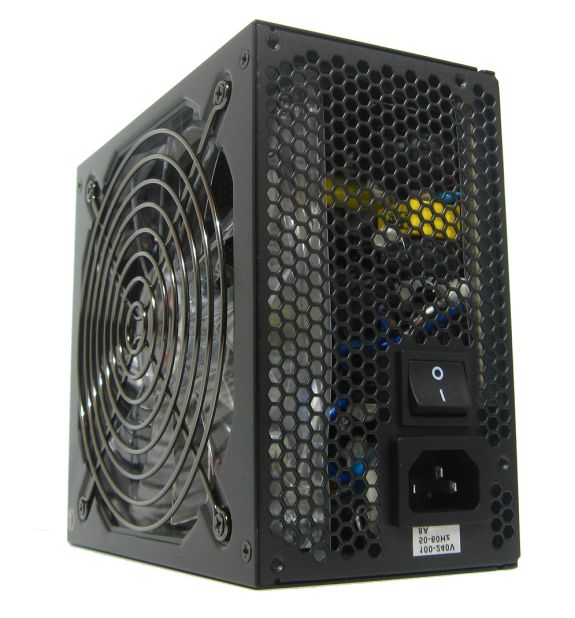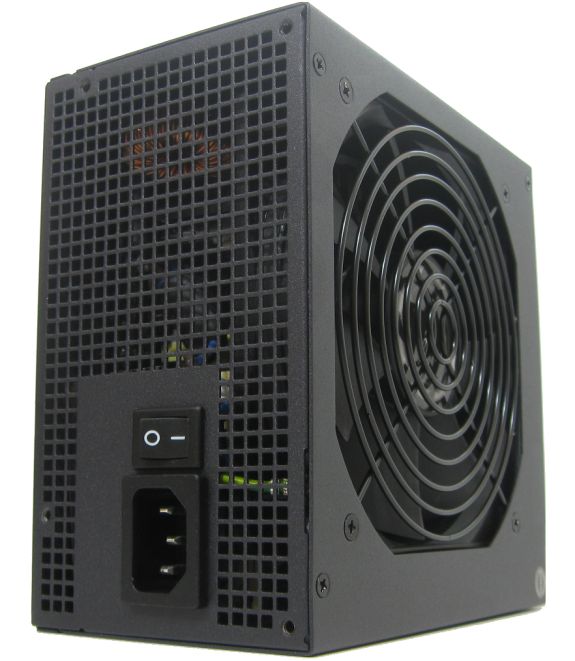550W Roundup: Three PSUs at Different Prices
by Martin Kaffei on October 28, 2010 4:00 PM ESTYou Get what You Pay for!
Perhaps our conclusion should also include the warning: caveat emptor (let the buyer beware), because it's clear that some PSUs should never see retail shelves. The Techsolo Black Mamba 550W belongs in this classification if you want a 550W PSU; in fact, the Techsolo is a ~250 watts power supply without an acurate working power factor correction—not to mention the fact that the efficiency is always below 75%.
If you just need a cheap power supply that will function at loads under 250W, perhaps budget products will fit the bill, but we'd suggest looking elsewhere as long-term power costs (and the risk of damaged components) makes this a gamble at best. In our case, the PSU died at 50% load, and there are no real safety functions—not even an MOV in the entrance. Both main switches are undersized and exploded. The protective ground wire is connected to a mounting screw of the main PCB. Again: Bad idea!
While the product looks decent, Techsolo offers nothing more than a few cables ties, one PCIe connector, and very short cables (40-45cm for the main cables). The cable sleeving is a nice extra, but we'd rather have the cost put elsewhere. Nothing else even suggests that this is a quality power supply. The noise for example is always over 22dBA and reached up to 28dBA at "50%" load. Another problem is the noisy PFC-choke, which is really loud and emits a high-pitched squeal. Passive PFC is always a noisemaker. In any case, Antec and OCZ are quieter and better, so just give this one a pass if you happen to be in Europe.

The OCZ Fatal1ty 550W is no superhero on the market, failing to stand out from the crowd. Your system won't run faster, and we have to wonder how much Fatal1ty gets paid for the use of his name—and if it even helps with increased sales, considering he's been quiet of late. This is a minor upgrade of the older OCZ ModXStream Pro 500W, with slightly improved internal devices, but that's about it. The EMI filtering has most necessary components, excluding an MOV. OCZ has switched to Teapo (LH, SC), after the Chinese caps weren't helpful for their public image. We can't say that they have the best characteristics, but they do a good job in power supplies. Now there are more protective foils against short circuits as well. This progress is absolutely welcome.
The downside of the PSU is that the ripple and noise results are very high for an "actual" product. More than 70mV on +12V and about 41mV on +5V can be measured. The efficieny is low at 10% load and not to remarkable at 50% load. Otherwise the voltage regulation is satisfying (never below -2% on all rails) and the power factor is high (above 0.840). The 45cm 24-pin cable should be long enough for small and mid-size cases, while the 4-pin and 4+4-pin ATX12V cables for the CPU could be much longer; we wouldn't recommend this PSU for use in cases where the PSU is at the bottom. Six SATA and HDD connectors are provided and there is a floppy connector at 90cm. The red cable sleeving is cheap but at least it's something.
What about the noise level? It's not bad at all. At low load there is no more than 18-19dBA. Even at full load the fan stays below 30dBA. Overall it is as quiet as the Antec TruePower New, but takes a small lead at high loads. This isn't a bad power supply, and it's reasonably efficient, but the high amount of ripple on the various rails is a concern for long-term stability, particularly if you're actually running this on a higher performance gaming system. Outside of noise levels the Antec is a far better PSU; you just have to decide if it's worth the additional cost.

When we look at the Antec TruePower New 550W, we can see good capacitors (Nippon Chemi-Con), many components for filtering in the entrance including an MOV, and well dimensioned +12V rails. The TruePower New has 55cm connectors for graphics cards and a 50cm 24-pin cable. The cable sleeving is again done rather cheaply, but the number of peripheral connectors gives no occasion for criticism. There is only one real problem: with a limited number of plugs you can't connect all the modular cables—even though this 550W unit should easily be able to handle such a configuration.
As for performance and quality, all the results from our tests are very impressive. The voltage is always over or near the ideal value and there is hardly any ripple and noise on any of the rails: less than 35mV on +12V, and less than 20mV on +3.3V and +5V. Up to 87% efficiency and a high power factor (above 0.850) is the primary reason for the cost; such results can only be reached with high quality devices, and those devices cost more than lesser offerings. In every case, Antec performs better than the OCZ and comes out the clear leader of this trio. And if you've ever wondered what the difference is between "budget" power supplies like the Techsolo and quality offerings like the Antec, hopefully we've managed to shed some light on the discussion.
So what's the overall conclusion? The gap between OCZ and Antec is far shorter than the gulf between OCZ and Techsolo, but you can definitely see why the Antec costs more. Long-term, the increased efficiency of the OCZ will easily pay for itself relative to a budget PSU, though we can't say the same for the Antec vs. OCZ. However, the Antec has much better characteristics elsewhere, and high ripple can put extra stress on your PC's components making the Antec a better choice for enthusiasts and anyone looking for maximum reliability. Is it worth the added cost? That's up to you, but we'd recommend spending as much on your PSU as you can afford; there's no reason to pair quality components (i.e. your motherboard, CPU, RAM, GPU, and SSD) with substandard power supplies. As our results here show, you clearly get what you pay for—though we'd recommend reading reviews to help choose between similarly priced, similarly specced PSUs.










82 Comments
View All Comments
Mathieu Bourgie - Thursday, October 28, 2010 - link
I'm with everyone here, crap power supplies are a plague and with the marketing focusing on the Watts "output" (many PSU are overrated as Martin pointed out with the Techsolo Black Mamba 550W), it just gets worse for uneducated consumers.I wish that ATX specs were tighter and that if anything, PSUs should be regulated by an independent commission whose approval you need to sell a PSU (not going to happen, I know), or at the very least to display their label (like 80 PLUS).
Requirements being based on being capable on delivering promised output (At 50C, not 30C or 40C...), ripples within a certain reasonable range, overcurrent/undercurrent/surge/etc. protection to prevent both fires and to protect the PC components, correct wire gauge and other important things that don't come to my mind right now.
In short, a certification that would tell you that PSU has what you should look for and will work reliably as intended. Just like 80PLUS with efficiency, what a great certification. Not perfect, but it's a big step forward.
Stuka87 - Friday, October 29, 2010 - link
Typically the UE and CE certifications should be that governing body when it comes to PSU's. If it is typical for the PSU that burned to have those issues, it should never have gotten certified.Although there is the "Fake" CE mark that looks very similar to the european CE mark, but actually stands for "China Export". I have seen some cheap electronics (and cheap open frame PSU's) with this mark on it before. And of course those PSU's tested out to be crap when ever I hooked one up to my power analyzer.
But an ATX specific spec would be awesome.
brybir - Thursday, October 28, 2010 - link
"This PSU is not available in the US, but it's still a nice representative of the crap-section."While this may be objectively true (as it appears to be), I suppose I expect Anandtech articles to read less like blogs and more like professional evaluations that give the facts up front and well reasoned, supported and defensible conclusions at the end. At least that is what I have come to expect on Anandtech....please dont turn into Tomshardware (i.e. poor writing with sensationalism everywhere).
JarredWalton - Thursday, October 28, 2010 - link
I'll just chime in here by stating that Martin is located in Germany and as such is not a native-English speaker. I heavily edit most of his reviews, but it can get a bit tedious at times to rewrite every little phrase. Perhaps I should have been a bit more creative up front, but I let this description of the Black Mamba go through and apparently you guys didn't like it, so I've reworded it to be a bit more professional. Maybe I was just reminded of Michael Meyers: "If it's not Scottish, it's CRAP!" :-Dlenghui - Thursday, October 28, 2010 - link
Well, great job translating, Jarred, and great job writing, Martin. Great review.I happen to own an OCZ Fatal1ty 550W and a ModXStream Pro 500W, so this article intrigued me. I have owned both for over a year, running 24 x 7 x 365. No problem so far (touch wood).
brybir - Friday, October 29, 2010 - link
Thanks for changing that. I read that whole article and enjoyed the comparison as I am pretty uninformed about PSU and why one is better than the other, but that one little phrase just kept coming back into my mind when I thought about the article. Keep up the good work!softdrinkviking - Sunday, October 31, 2010 - link
it's not "you guys" that don't like it, it's just one prick.you and Martin are both doing a great job, and i absolutely floored that
you are catching shiite for that one sentence.
i mean, how stiff can you possibly be to take offense at that?
Calin - Friday, October 29, 2010 - link
A 550W power supply that blows at 300W actual output is certainly "crap-section" - so, in this specific case, I understand the feeling.dertechie - Saturday, October 30, 2010 - link
Yeah, I actually enjoy the black humor often found in PSU reviews.EddyKilowatt - Tuesday, November 2, 2010 - link
Well the thing performed poorest on the tests, and failed at half rated load... those are supportable and defensible results by my standards.I don't have a problem with Martin's exasperation creeping in a bit early in the review. Everyone with knowledge needs to take a stand against the cheap crap that's always threatening to flood the market and drive the good stuff out. Martin's comment might've been out of line if the Techsolo had under-performed by 10%... but it *failed with smoke* at just half rated load! That's crap, and I'm glad he called it such.